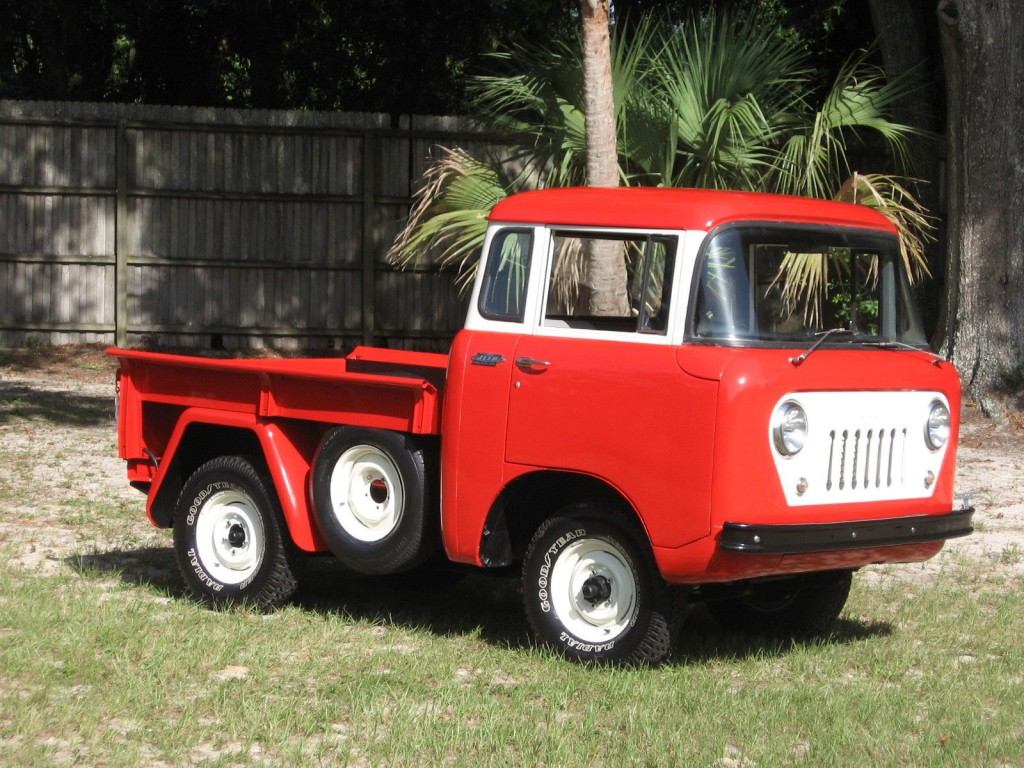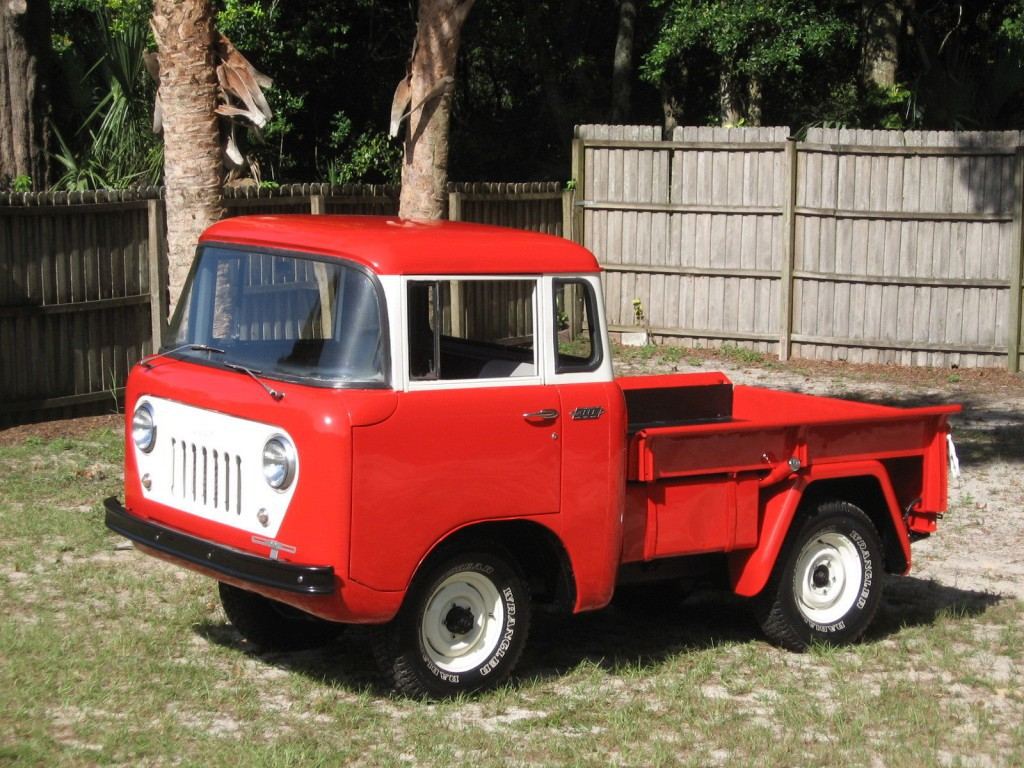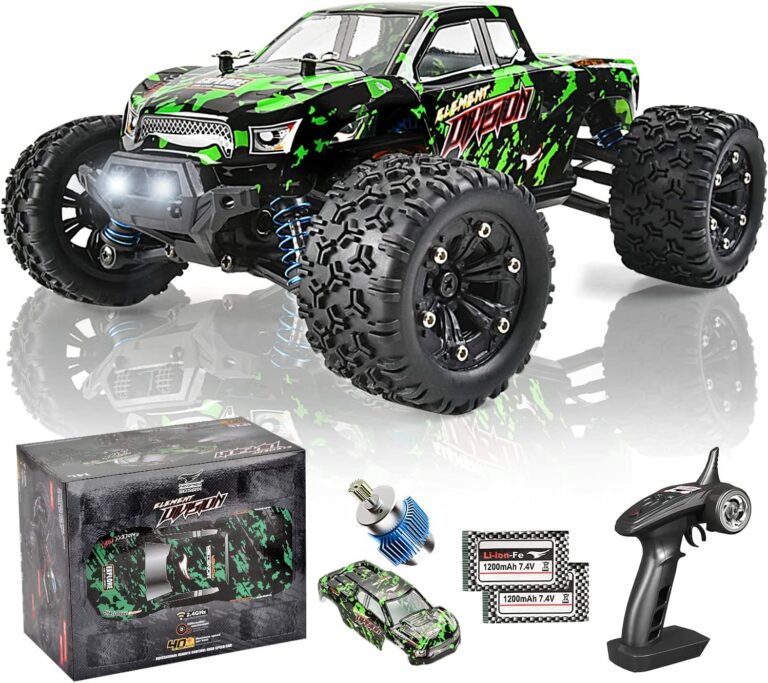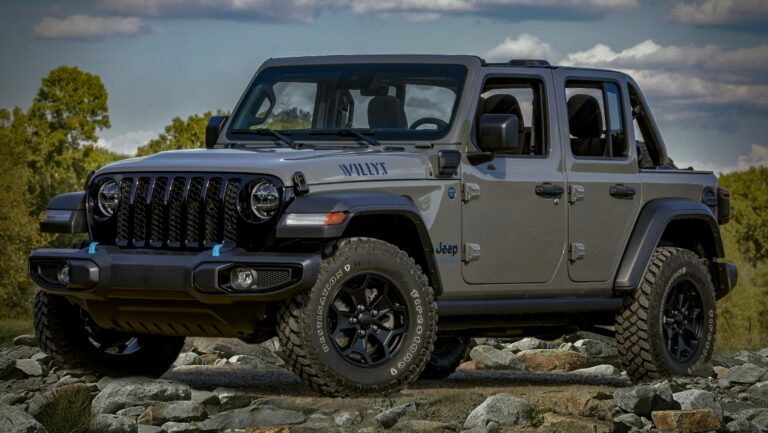1958 Jeep FC-150 For Sale: A Comprehensive Buyer’s Guide
1958 Jeep FC-150 For Sale: A Comprehensive Buyer’s Guide jeeps.truckstrend.com
In the vast landscape of classic American vehicles, few stand out with the quirky charm and rugged utility of the 1958 Jeep FC-150. "FC" stands for "Forward Control," a design philosophy that pushed the cab over the front axle, maximizing cargo space on a compact wheelbase. More than just a truck, the FC-150 was an innovative workhorse, a testament to Jeep’s commitment to versatility and function in the post-war era. Today, the opportunity to find a 1958 Jeep FC-150 for sale represents a chance to own a piece of automotive history – a vehicle that’s as much a conversation starter as it is a potential project or a cherished classic.
This comprehensive guide is designed for enthusiasts, collectors, and anyone curious about acquiring one of these unique machines. We’ll delve into what makes the 1958 FC-150 special, what to look for when buying, where to find them, and what to expect when you bring one home.
1958 Jeep FC-150 For Sale: A Comprehensive Buyer’s Guide
The Enduring Appeal of the 1958 Jeep FC-150
Introduced in 1956, the Jeep FC series was a bold departure from traditional truck design. The FC-150, based on the CJ-5 chassis, offered an impressive 74-inch cargo bed on a mere 81-inch wheelbase. This cab-over-engine configuration, while common in Europe and Japan, was relatively novel for light-duty trucks in North America. The design was born out of a need for a highly maneuverable, capable truck that could navigate tight spaces while carrying substantial loads – ideal for farms, construction sites, and urban deliveries.
The 1958 model year specifically benefited from early production refinements, establishing its reputation as a sturdy and reliable utility vehicle. Powered primarily by the venerable Willys F-head Hurricane 4-cylinder engine, it was never a speed demon, but it was known for its durability and torque, especially when paired with its robust 4-wheel-drive system.
Today, the appeal of the 1958 FC-150 lies in its distinctive aesthetics and its rarity. It’s not just a truck; it’s a statement. Collectors are drawn to its unique proportions and historical significance, while customizers see a blank canvas for everything from lifted off-road monsters to slammed street rods. Its compact size also makes it more manageable for storage and display than larger classic trucks.
What to Look For: Key Inspection Points for a 1958 FC-150
Purchasing a vehicle from 1958 requires a meticulous eye and a clear understanding of potential issues. While the FC-150 was built tough, decades of use, exposure to elements, and varying levels of maintenance take their toll.
Body and Frame
- Rust, Rust, Rust: This is often the biggest enemy of vintage vehicles, and the FC-150 is no exception. Pay close attention to:
- Cab Corners and Rocker Panels: These areas are notorious for trapping moisture.
- Floor Pans: Check under the mats for soft spots or patch jobs.
- Bed Floor and Supports: The cargo bed saw heavy use and is prone to rust, especially where water collects.
- Frame Rails: Inspect the entire frame for cracks, bends, or severe corrosion. This is critical for structural integrity.
- Wheel Wells and Fenders: Look for bubbling paint or perforations.
- Dents and Previous Repairs: Assess the quality of any bodywork. Poorly done repairs can hide underlying issues. Look for ripples, mismatched paint, or excessive bondo.


Engine and Drivetrain
- Engine (Willys Hurricane F-head 4-cylinder):
- Leaks: Check for oil, coolant, and fuel leaks. Minor weeping might be acceptable, but significant drips indicate problems.
- Smoke: Blue smoke suggests oil burning; white smoke could indicate a head gasket issue; black smoke points to a rich fuel mixture.
- Unusual Noises: Knocks, ticks, or grinding sounds are red flags.
- Compression Test: If possible, perform one to assess engine health.
- Transmission (3-speed manual) and Transfer Case:
- Shifting: Test all gears, including reverse. Look for grinding or difficulty engaging gears.
- Clutch: Check for slippage or excessive play.
- 4WD Engagement: Ensure the transfer case shifts smoothly into 2WD, 4-High, and 4-Low.
- Axles: Check for leaks around the differential covers and wheel ends. Listen for unusual noises during a test drive.
Suspension and Steering
- Leaf Springs: Inspect for broken leaves or sagging, which can indicate tired suspension.
- Shocks: Look for leaks or rust; worn shocks will lead to a bouncy ride.
- Steering Linkage: Check for excessive play in the steering wheel. Worn tie rods, drag links, or a loose steering box can make driving unsafe and unpleasant.
Brakes
- The FC-150 uses drum brakes all around. Check the master cylinder for fluid levels and leaks. Inspect brake lines for corrosion or damage. During a test drive, ensure the brakes stop the vehicle evenly and without pulling.
Interior
- Seat: Original seats are often torn or worn. Check the frame for rust or damage.
- Dashboard and Gauges: Ensure gauges are present and functional (or repairable).
- Controls: Test lights, wipers, horn, and heater (if equipped).
- Originality: Note any modifications or missing components if originality is important to you.
Electrical System
- Vintage wiring can be brittle and prone to shorts. Look for frayed wires, amateur repairs, or non-functional lights. A complete electrical overhaul can be costly.
Documentation
- Ensure a clear title is available and matches the VIN on the vehicle.
- Service Records: Any history of maintenance or restoration adds value and peace of mind.
- Provenance: Knowing the vehicle’s history can be a significant bonus.
Understanding Condition Categories and Their Implications
The price and effort required for a 1958 Jeep FC-150 vary wildly based on its current condition. Understanding these categories will help you set realistic expectations and budget effectively.
- Project Vehicle: These are typically non-running or require significant mechanical and bodywork. They are the most affordable but demand substantial time, skill, and financial investment for restoration. Ideal for experienced restorers or those seeking a ground-up custom build.
- Driver Quality: A running and driving vehicle that is generally presentable but may have minor cosmetic flaws, some rust, or small mechanical issues that don’t prevent it from being driven. These are great for immediate enjoyment and can be improved over time.
- Restored/Show Quality: These vehicles have undergone extensive, professional restorations, often to original factory specifications or better. They command premium prices and are typically found at classic car dealerships or high-end auctions. They are suitable for collectors or show events.
- Modified/Resto-Mod: These FC-150s have been updated with modern components, such as a different engine (e.g., V8 swap), modern suspension, power steering, disc brakes, and creature comforts. They offer classic looks with improved performance and reliability, but their value is subjective and depends on the quality of the modifications.
Where to Find a 1958 Jeep FC-150 For Sale
Finding a specific classic like the 1958 FC-150 requires a targeted search.
- Online Marketplaces:
- eBay Motors: Frequent listings, ranging from parts cars to restored examples.
- Hemmings Motor News: A reputable source for classic cars, often featuring higher-quality listings.
- Bring a Trailer (BaT): Known for well-documented and often high-value classic car auctions.
- ClassicCars.com, Autotrader Classics: General classic car listing sites.
- Specialized Forums and Groups: Websites and social media groups dedicated to Jeep FC vehicles (e.g., TheFCConnection.com) are excellent places to find vehicles for sale by enthusiasts who truly know them.
- Classic Car Dealerships: Reputable dealerships specializing in vintage trucks often have restored or driver-quality examples, though typically at higher prices.
- Auctions: Live auctions or online auction houses can be good sources, but inspect vehicles thoroughly or arrange a third-party inspection beforehand.
- Word-of-Mouth and Local Classifieds: Sometimes, the best deals are found through local connections or less-trafficked sites.
Tips for Searching: Set up email alerts on listing sites for "Jeep FC-150" or "Forward Control." Be patient; these are not common vehicles.
The Purchase Process and Important Considerations
Once you’ve found a potential 1958 FC-150, the buying process begins.
- Budgeting: Beyond the purchase price, factor in:
- Transportation: Shipping a non-running vehicle can be expensive.
- Immediate Repairs/Maintenance: Even "driver quality" vehicles often need work.
- Insurance: Classic car insurance is typically more affordable than standard auto insurance but has specific requirements.
- Registration and Taxes: State-specific fees.
- Future Upgrades/Restoration: Set aside a contingency fund.
- Pre-Purchase Inspection (PPI): This cannot be stressed enough. If you can’t inspect it yourself, hire a qualified mechanic or classic car specialist to perform a PPI, especially if buying long-distance. An unbiased expert can identify costly hidden issues.
- Negotiation: Research market values thoroughly. Be prepared to negotiate based on the vehicle’s condition, your inspection findings, and the seller’s motivation. Don’t be afraid to walk away if the deal isn’t right.
- Logistics: Plan how you’ll get the vehicle home. Will it be driven, trailered, or shipped?
- Legalities: Ensure you receive a clear title and a bill of sale. Verify the VIN on the title matches the vehicle. Understand your state’s requirements for titling and registering a vintage vehicle.
Owning a 1958 Jeep FC-150: Life Beyond the Purchase
Acquiring a 1958 FC-150 is just the beginning of the journey. Owning a classic vehicle comes with its own set of unique experiences and responsibilities.
- Maintenance Challenges: While the Hurricane engine is robust, parts for specific FC components can be harder to source than for more common Jeeps. Join online communities and forums for tips on parts suppliers and repair techniques. Be prepared for older technology that may require more frequent attention than modern vehicles.
- Community and Resources: The FC community is passionate and helpful. Online forums, clubs, and local events are invaluable resources for advice, parts sourcing, and camaraderie.
- Enjoyment: Driving an FC-150 is a unique experience. Its unassisted steering, drum brakes, and low power require a different driving style. It’s a vehicle for leisurely cruises, local shows, and light utility, not highway commuting.
- Appreciation vs. Costs: While some well-restored examples may appreciate in value, view an FC-150 as a passion project rather than a guaranteed investment. The joy comes from the ownership experience and the connection to automotive history.
Price Table: 1958 Jeep FC-150 For Sale (Estimated Ranges)
Please note: These prices are estimates and can vary significantly based on originality, modifications, geographic location, seller urgency, and market trends.
| Condition Category | Description | Estimated Price Range (USD) |
|---|---|---|
| Project Vehicle | Non-running, significant rust, major mechanical issues, incomplete. Requires a full restoration. | $3,000 – $8,000 |
| Driver Quality | Running and driving, functional. May have cosmetic flaws, minor rust, or small mechanical quirks. Enjoyable as-is, but with room for improvement. | $8,000 – $20,000 |
| Restored/Show | Meticulously restored to original specifications or better. Excellent paint, solid frame, rebuilt mechanicals. Suitable for shows and serious collectors. | $20,000 – $45,000+ |
| Resto-Mod | Modern engine (e.g., V8), updated suspension, power steering, disc brakes, A/C. High-quality build combining classic looks with modern performance and comfort. Price highly dependent on quality of build. | $25,000 – $60,000+ |
Frequently Asked Questions (FAQ)
Q1: What engine does the 1958 FC-150 typically have?
A1: The 1958 Jeep FC-150 most commonly came with the Willys Hurricane F-head 4-cylinder engine, known for its durability and torque.
Q2: Are parts hard to find for the FC-150?
A2: While some common mechanical parts (engine, drivetrain components shared with CJ-5) can be found, body panels and unique FC-specific parts can be challenging to source. Online forums and specialized suppliers are your best resource.
Q3: Is the FC-150 good for daily driving?
A3: Generally, no. Its lack of modern safety features, slow top speed, manual steering, and drum brakes make it less suitable for contemporary traffic. It’s best enjoyed for short trips, cruises, and local events.
Q4: What’s the fuel economy like?
A4: Expect modest fuel economy, typically in the range of 10-15 miles per gallon, depending on engine condition, terrain, and driving style.
Q5: Can I modify an FC-150?
A5: Absolutely! Many owners choose to "resto-mod" their FC-150s with modern engines (like a small-block V8), updated transmissions, power steering, disc brakes, and improved suspension to enhance performance and driveability while retaining the classic look.
Conclusion
The 1958 Jeep FC-150 is more than just a truck; it’s a charismatic slice of American automotive history. Its distinctive forward-control design, rugged utility, and increasing rarity make it a highly desirable classic for a specific type of enthusiast. The journey of finding and acquiring one is an adventure in itself, demanding careful research, thorough inspection, and a clear understanding of the commitment involved. However, for those willing to embrace its quirks and invest the necessary passion, owning a 1958 FC-150 offers an incredibly rewarding experience, providing not just a unique vehicle but also a strong connection to a vibrant community of fellow enthusiasts. If you’re looking for a vehicle that truly stands out from the crowd, the search for a 1958 Jeep FC-150 for sale might just be the perfect quest.





